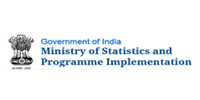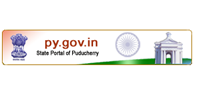DR.VINAYAK GOVIND PANSE
Born in Maharashtra State on 11 January, 1906, Dr.Vinayak Govind Panse had his early education at Nasik and graduated in 1927 from the University of Bombay. He started his career as Agronomy and Chemical Assistant at the Institute of Plant Industry, at Indore in 1927. He worked with Dr. Hutchinson, the noted plant breeder and developed his interest in the use of quantitative techniques in agronomy. Plant breeding in those days was more an art than a science depending for the most part on the judgment and skill of the plant breeder. Mass selection, which the method in use and which consisted of choosing from the material under selection a number of plants which appeared to have superior value, bulking the seed from these, raising from the seed the next generation and continuing selection in this generation, was obviously inefficient in that the selection was subject to a large amount of environmental or non-genetic variability present in this field. Instead of bulking the seed contained from different selected plants, breeders saw the need to sow it separate progeny rows and to make the selections on the basis of progeny means. The difficulties in conducting randomnised -replicated tests were particularly large in the early stages of breeding when the material was even more hetero as the genetic values contributed to experimental error. Hutchinson and Panse set about adapting the randomnised block and split plot designs to the plant breeding material and succeeded in developing what is known as replicated progeny row and compact family block designs. The results of their work were published in the Indian Journal of Agricultural Sciences. (1935,1937).
He took the study of quantitative techniques a lot further by introducing appropriate genetic models, which helped to bring out the effect of the number of segregating genes, the magnitude of their action, the modification due to dominance and the influence of the environment on progress due to selection. This work under the guidance of Sir Ronald A. Fisher in England was published in the Journal of Genetics and Annals of Eugenics and earned him Ph.D from University of London.
In 1940, he was appointed to the newly post of Statistician at the Institute of Plant Industry, Indore. He was also the Statistician at the Indian Central Cotton Committee(ICCC) and was making proposals for improving statistics of cotton production. He made several significant contributions and rose to the position of Director of the Institute in 1949.
The method of crop-cutting surveys developed by him had tremendous impact on the work which Indian council of Agricultural research was asked to undertake at the time of improving statistics of acreage and yield of principle crops all over the country. So rapid was the progress of ICAR work that yield surveys based on the method became an annual routine in most States within the course of a few years. In 1951, Dr. Panse took over the direction of ICAR work himself and set out to extend the sampling technique to other crops till the transfer of this work to National Sample Survey in 1952. In 1951, he moved to Delhi as Statistical Advisor to the Indian Council of Agricultural Research. The success of his approach to Statistical Research in both experimental and surveys in the field of Agriculture led to the expansion of the statistical unit of Indian Council of Agricultural Research into a full-fledged institute of Agricultural Research Statistics presently renamed as Indian Agricultural Statistics Research Institute.
Dr. Panse assisted the Food and Agricultural Organisation of the United Nations on several occasions. He was the FAO Regional Advisor for Agricultural Census in Asia and the Far East during 1960-61. He also served as an FAO Consultant for advising several countries on the improvement of agricultural statistics especially fisheries statistics. He wrote a Manual on the problems of agricultural census with special reference to developing countries extending the concepts of agricultural census itself as an integrated system of surveys. After retiring as Statistical Advisor, ICAR in January 1966, he joined Planning Commission as Senior Specialist and worked till September 1966 when his ill health forced him to retire from active work.
Dr. Panse’s work in the subject of plant genetics and plant breeding trials, designs and analysis of agronomic experiments in farmers’ fields sampling techniques for improvement of statistics of acreage and yield of crops, cost of production studies, estimation of fish catch, estimation of livestock numbers and products, assessment of large scale improvement programmes such as intensive Agricultural District Programme, planning for food supply etc., is well known and brings out his versatility and caliber. Dr. Panse was a founder member of Indian Society of Agricultural Statistics. He was the Secretary of the Society from 1962 to 1966 and Editor of the Journal of Indian Society of Agricultural Statistics since its first issue in 1948 upto 1960. He was appointed as the Vice President of the Indian Society of Agricultural Statistics. On Friday, 22 July , 1969 he passed away peacefully at his residence in Nasik, Maharashtra.












